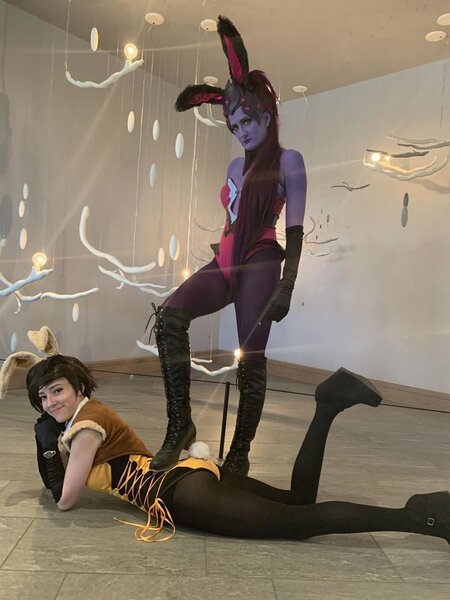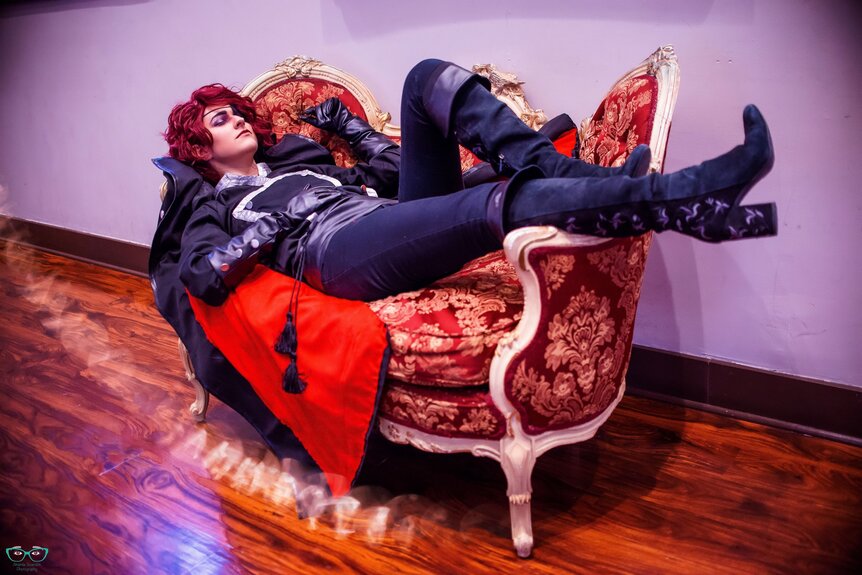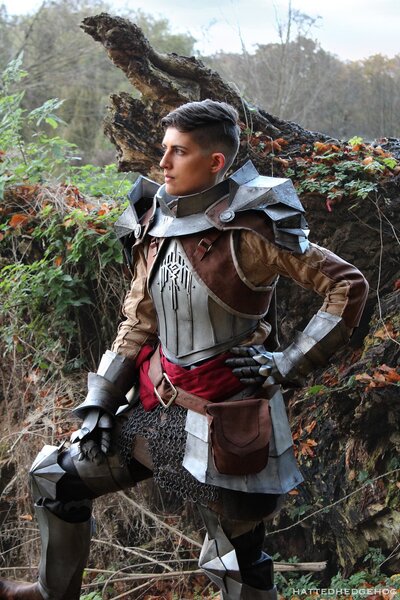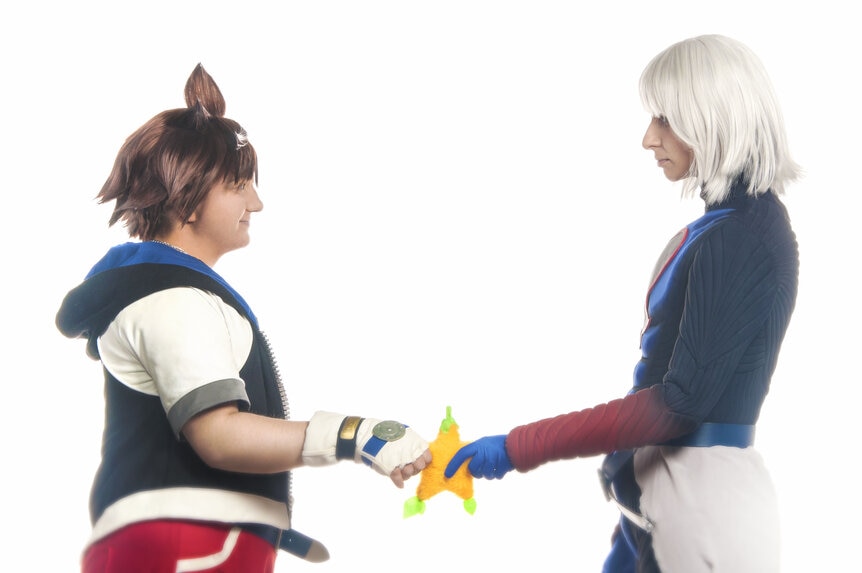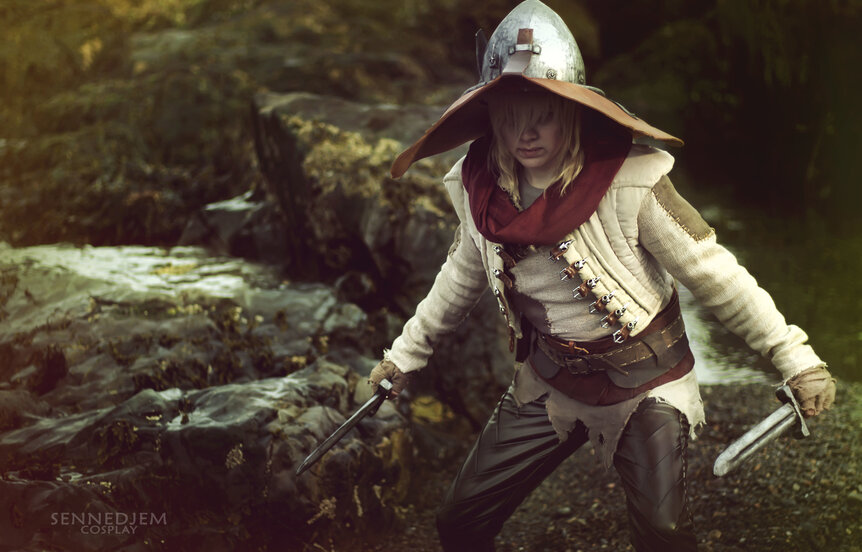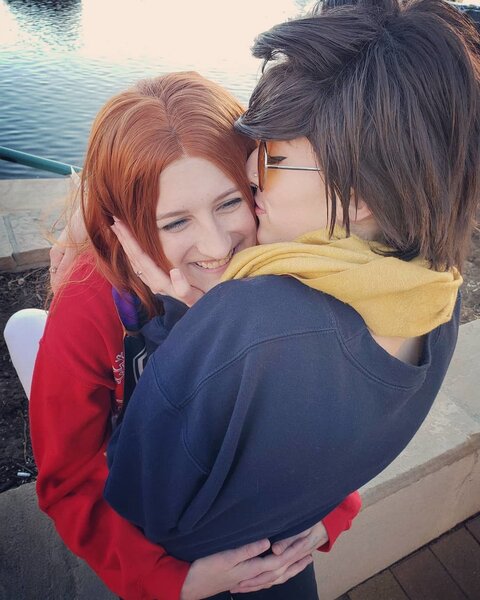Create a free profile to get unlimited access to exclusive videos, sweepstakes, and more!
LGBTQ+ cosplayers reveal the queer video game characters they identify with
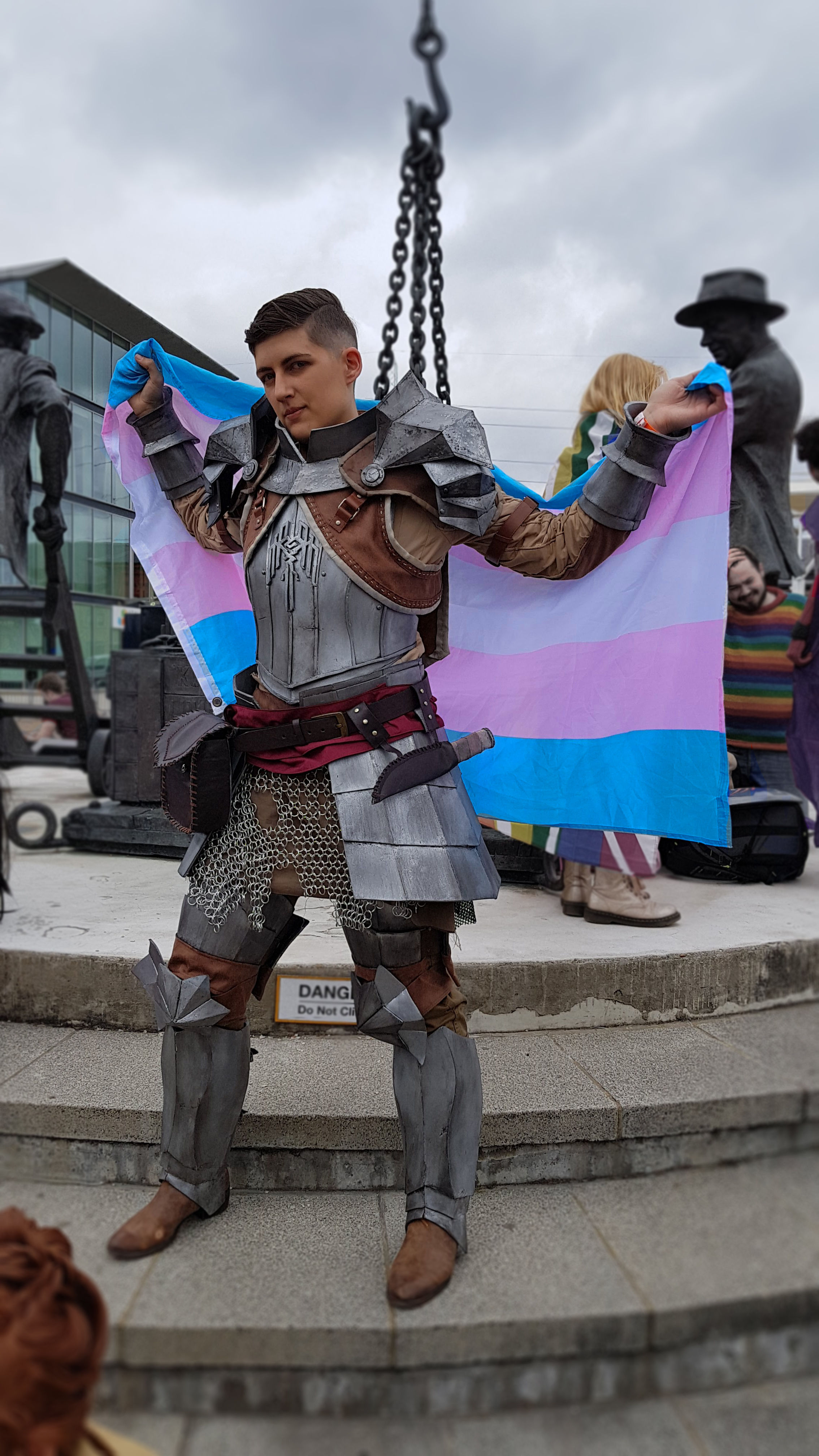
More than just dressing up, cosplay is an avenue for self-expression. In particular, it has allowed many of those who identify as LGBTQ+ to share their true selves, or selves they're curious about. Cosplaying can be a way of becoming someone else entirely, perhaps a person you identify more with than that of your day-to-day life.
Video games are increasingly giving cosplayers more diverse characters whose shoes that they can step in to. Mass Effect 3 made it possible to have a same-sex romance with Kaiden, who had previously only been available to female players. Ellie, the heroine of The Last of Us is a lesbian, her sexuality revealed as she aged in the game. Overwatch’s revelation that fan-favorite Tracer was a lesbian made headlines, which which particularly delighted a cosplayer named Alli, and her girlfriend Shanna.
"I've only even known Overwatch with Tracer being gay," she tells SYFY WIRE. Tracer quickly became Alli's go-to cosplay, a character she saw herself in. Her pansexual non-binary girlfriend, Shanna, was also delighted by Tracer's canonical homosexuality.
"There are many instances where I see people complaining about... any character that is revealed as LGBTQ+. [Saying] that it isn't needed..." she explains, "but unless you're part of our marginalized group you don't truly grasp how much this means to us."
Later on, Overwatch would reveal a second homosexual character in Soldier 76, and the fan community around the game has also reinterpreted many characters to make the diverse cast even more so.
When LGBTQ+ cosplayers are looking for characters to create outfits for, many of them find themselves drawn to those who share their own experiences. These are their stories.
EXPLORING GENDER THROUGH COSPLAY
"Prior to cosplay, I had never gotten to experience what it was like to present myself as a male," Kittum, who has been cosplaying for six years, explains. "Once I learned that I could only relate to male characters, I got into the habit of only cosplaying men, and realized that I deeply enjoyed expressing myself in that way."
Eventually, Kittum came to realize that they were bigender.
The Arcana, a dating sim, is particularly poignant in Kittum’s cosplay journey. The game itself is incredibly inclusive, with a large number of characters falling under the LGBTQ+ umbrella. It’s Julian Devorak, who is pansexual, who attracted Kittum’s attention.
"I have a blast every time." They say. "Partially due to the game’s inclusivity, I am much more invested in keeping up with the ongoing storyline and plot." That's an important point: Those who identify with a character, be it through their gender (or lack thereof) or sexual orientation, are more likely to become invested in their stories. The more of these characters that exist, the larger the audience will grow. In many cases, video games seem to be clueing into this much faster than television and film.
THE CHARGER WHO CHANGED EVERYTHING
When Dragon Age: Inquisition was released in 2014, it made headlines for a number of reasons, including its dedicated inclusion of LGBTQ+ characters. The game also had a transgender minor character who had complexity, a full backstory, and who could change the course of the story. Cremisius "Krem" Aclassi meant a lot to many transgender gamers, especially Harry.
"I started reading Dragon Age fanfiction before I owned the game, and I thought that Krem being a trans man was just wishful interpretation on the part of the authors," Harry recalls. "I cried when I played the game and found that it was REAL, and he talks openly about it, and his found family stands up for him."
Harry says that they promised themselves that if they cut their hair, they could finally cosplay the character that meant so much to them. Harry had been struggling with their gender identity, especially in an unsupportive work environment, but the idea of being able to cosplay as Krem eventually won out. "That one hair appointment was the start of my most fulfilling project to date."
Harry is mostly known for their Krem cosplay inside the Dragon Age community, and the character has been an inspiration and powerful symbol of defiance against naysayers.
"Displaying my transgender pride flag as a cape while wearing full armor feels like such a power move in today’s social climate and I want others to feel empowered witnessing it, even if they’re not in a position to fight themselves," Harry says.
WEDDING BELLS AND PAOPU FRUIT
Shiva and Kanehime, both from Barcelona, met, fell in love, and got married thanks to cosplay. Today, they both cosplay under Yogur Team and continue to celebrate their relationship through a myriad of characters.
"Since we are attracted to characters with whom we feel a connection, we are definitely turning more to characters that read as queer," the couple explains.
And, that includes characters who are not expressly, canonically queer. Queer interpretation is valid, be it headcanon, subtext, or perhaps just not expressly stated because the creators don’t feel the need. This is very true in terms of their reason to cosplay Sora and Riku from Kingdom Hearts. The pairing is exceptionally popular, though there's no official statement on it. In the end, however, if people read it that way, that’s good enough.
"When we were young there was hardly any representation in media... so we often felt alone in our experiences," Shiva and Kanehime tell SYFY WIRE. "With social media and a hashtag like #LGBTCosplay, we can show the world that we exist, we are here, but most of all, we can show others like us that they are not alone."
ASEXUALITY AND A SPIRIT NAMED COLE
Sennedjem is a member of what they jokingly refer to as The Triple-A crowd: agender, aromantic, and asexual. Cosplay has become instrumental to Sennedjem as they became more and more comfortable with their own identity. Even though they identify as agender, they’re on the more masculine side of the spectrum.
"When I portray [male] characters, it feels so affirming and validating to not be constantly misgendered as I often am in daily life. Becoming male characters helped me realize how right it felt to be more masculine," they explain.
Exploring their sexuality has become part of the process as well, especially when it comes to characters that they perceive to be aromantic and/or asexual. For this reason, Cole, a character from Dragon Age: Inquisition, has become their most important cosplay.
"His journey of feeling unsure of who he is, wondering if he is broken, seeing and experiencing things differently from everyone else around him — this resonated with me profoundly," they explain. "And like him, I’ve come to understand how I feel and who I am, and have found people who will accept and support me, even if not everyone does."
Cole is not explicitly stated to be anything, as he’s a spirit, though that’s why so many, Sennedjem included, believe he is aro/ace. "Aromantic and asexual are often spoken of as ‘invisible’ identities, and unfortunately there’s truth in that," they explain. "But we are just as valid as any other identity in the queer community, and we deserve to see characters like ourselves in media, clearly and openly."
THE GROWTH OF LGBTQ+ REPRESENTATION IN VIDEO GAMES
"Today, video games are somewhat spearheading in LGBTQ+ representation, but back in the day, it was really difficult to find any queer representation in the video games world (or in any world, for that matter)," Kanehime and Shiva tell SYFY WIRE, explaining how, when they started, they had to settle for any strong relationship they could read as queer, even if it was only hinted at. The lesbian-bisexual couple agree that with time, mainstream media will be willing to take a leap of faith and become more inclusive. However, they’re over settling for crumbs.
"We tend to buy more video games and any kind of media that is representative of our reality, and we are more critical of those that are not," Shiva says, rather pointedly.
"I am always really happy to see others getting representation of their particular identities, and at the same time I can be sad that there is not more progress in other areas," Harry says, noting that they've found only one other transgender man character in mainstream video games, Ned Wynert from Assassin’s Creed: Syndicate. Trans characters are much more common in indie games and lesser-known titles, but are still rare in blockbuster games.
For LGBTQ+ fans, it's not just a matter of "making their own queer characters" when mainstream media won’t provide them. True representation needs more than that; it needs integration and normalization. The video game industry still has work to do, but the notable instances of very visible representation are appreciated.
"It’s affirming and validating to have a big company backing you up and standing up for your existence, instead of having to defend yourself all on your own," Harry says. "All I really want is media with LGBT+ characters who just happen to be part of the world and contribute to the story."
This was a reason why Shanna and Alli were so delighted when it was revealed that Tracer had a canonical girlfriend. Not only would they get to cosplay them as a legitimate couple, but that representation mattered so much to them.
"When I saw my girlfriend in the wig and outfit I felt like a kid in a candy store. It was a dream come true," Alli says. When Shanna started playing Overwatch herself, she liked Widowmaker, leading the pair to cosplay the popular ship of WidowTracer. "Any opportunity I can get to do a ship cosplay with her, I'll take it."
"Representation in media has gone very far, but there is still a very long way to go, until queer feels as natural as non-queer," Kanehime and Shiva add. Hopefully sooner rather than later.
